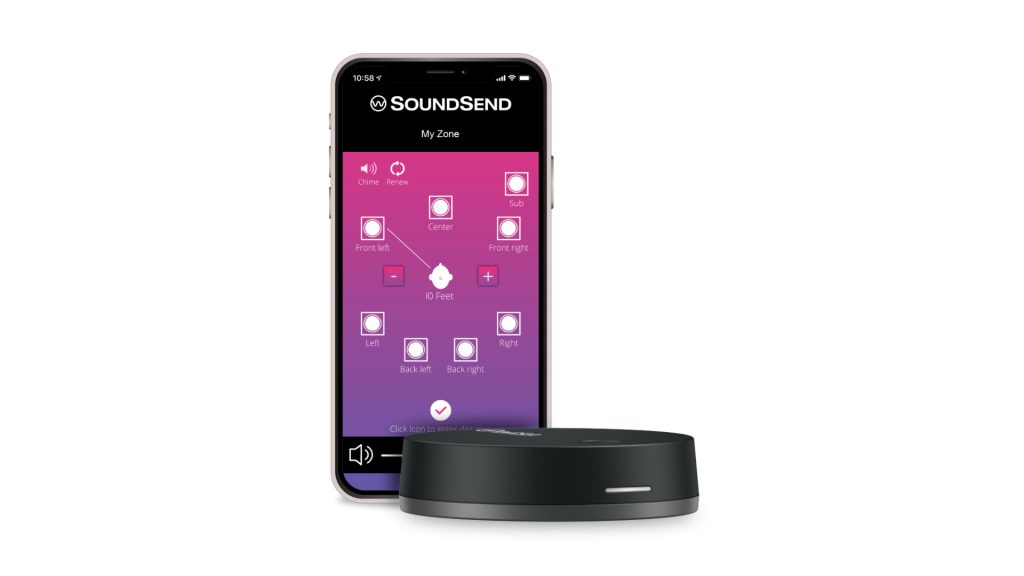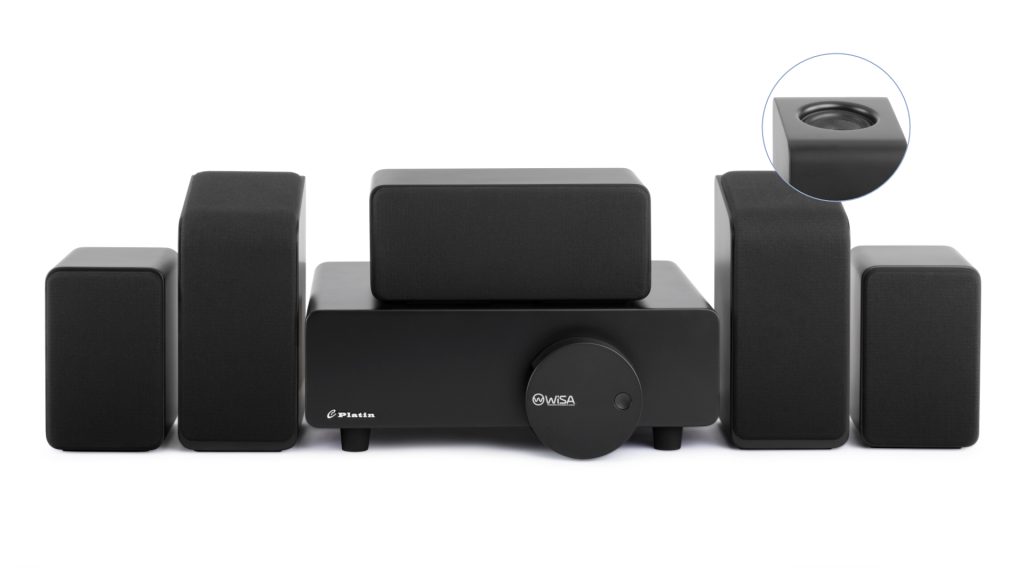It’s going to sound crazy, but for years when I attended CES, one of the things I looked forward to most was collecting a free audio demo disc. Not that I didn’t appreciate the millions of square feet of TVs, robots, phones, drones and other innovative electronics—or the oodles of other swag options available for the taking. But long after the LVCC had cleared away the bright, loud, shiny booths, that demo disc was something I could pop into my DVD player at home to bask in what my surround sound system could do.
All that to say, when it comes to home theater, I’ve always been a proponent of going bigger on audio before video. Over the years, I have heard scads of fancy audio rigs at shows and tested some of the more commonplace systems at home. This is why I put a premium on surround systems with physical speakers in the rear that are affordable, easy to set up and sound great in a completely untreated room.
Platin Audio’s Monaco 5.1 ticks all those boxes. In fact, last year when I first got to audition it, the Monaco was the easiest wireless surround system I’d set up to date. (For the moment, let’s ignore stellar soundbars that pair with surround speakers.) So, when I heard that Platin was introducing a Dolby Atmos version featuring actual up-firing speakers (as opposed to cleverly simulating that spatiality), I was intrigued to hear it for myself.
Unexpectedly Small Box

The first thing that struck me about the Monaco 5.1 was just how small the outer box was. By the looks of it, rather than packing six speakers (including the subwoofer), I would’ve expected it to be holding a single 6,000 BTU window-based air conditioner. The box for the 5.1.2 version is only a little bigger: 18 x 20 x 14 1/2 inches. Therefore, it won’t take up much space on a showroom floor, especially when compared to other surround systems.
Ridiculously Fast Installation
One mark of an easy set-up is that it takes longer to get the product out of the box than it does to actually get it up and running. Fortunately, this is the case here. All that is needed to set up the system is to find spots for each of the speakers to live. The center channel and SoundSend hub go right under the screen; subwoofer stashes a little off to the side; and the left and right, front and rear channels should be positioned as close to ear level as possible. In lieu of proper speaker stands, they need to be placed on a steady desk or shelf near an outlet, since each speaker needs to be plugged in. But if I knew ahead of time exactly where I was going to put the speakers, I could easily install the whole system in five minutes flat.
How the Hub Works
The SoundSend hub—the brains of the operation—has three inputs in the back: power, HDMI and optical. Since optical can’t pipe through enough audio information to make Atmos happen, the best bet is to use HDMI, connecting the other end to the (e)ARC port on your TV or projector. Once the hub is plugged in, it takes less than 30 seconds for it to find and wirelessly connect to each of the six speakers. And at that point, you’re ready to go.
A Word to the WiSA
If the hub is the brains of the system, then the WiSA consumer electronics consortium is the brains behind the brains. As the President of WiSA, Tony Ostrom, explained: “WiSA strives to make spatial, immersive audio experiences available to every household with a variety of product price points, simple plug-and-play system setup and a growing number of interoperable products, from speakers to soundbars to transmitters, so every home can have a unique setup that meets their home entertainment goals.” In other words, they work with a variety of partner brands such as Bang & Olufsen, Hisense, Klipsch, LG, and Platin to ensure that WiSA Certified components “can be combined to create amazing home cinema experiences,” as Ostrom put it. So if you’re considering a wireless audio system, you should scan for their logo on the box.
Let the App Work for You

Technically, you don’t need the app to use this system. Once the hub recognizes all the speakers and HDMIs connected to your source, you can play movies and shows, using the remote of whatever the system is plugged into for control of the volume. But, if you do download the SoundSend app to your (Android or iOS) phone, it opens a world of features and preferences you can select.
For starters, you’ll want to confirm that the appropriate configuration (in this case, 5.1.2) is selected, to ensure it is piping the right audio to each channel. Next, you can tap icons representing the speakers, causing each of them to emit a tone indicating that—as labeled on the back—they’re all in their proper relative positions. Then if you want to get fancy, you can even input into the app how far away from the sweetspot each speaker is, for which the system will automatically compensate.
From there, the app features a master slider to raise and lower the volume of all the speakers at once. But you can also trim each one individually, if it feels like any of them could use an extra boost (or duck). Other audio adjustments include EQ, mode selection (i.e. night, movie) and the delay that ensures the audio matches the moving lips of the folks up on the screen.
Other Monaco Variations
In addition to this new Atmos system ($1,499), Platin still sells the 5.1 version for $400 less. The company also recently began offering a 5.2.2 version (in case you want to add a second subwoofer) for just $200 more than the 5.1.2 version—whereas the sub usually sells separately for $249.
How It Fares Against the Competition
Although Edifier used to offer some snazzy-looking systems, it appears from the lack of availability listed on its site that the company has chosen to focus more on headphones. In the world of wireless home theater in a box, that leaves Enclave Audio as the remaining alternative. Enclave’s original system was the first wireless surround system I reviewed (and enjoyed). And I also tested their updated/upgraded CineHome Pro model, which is closer to the Monaco 5.1.2 in both price and features. If I were going based off raw power, the Enclave would probably win, but I find the Platin’s volume and clarity to be plenty satisfying to my ears. Adding the convenient size and ease of set-up and, for me, the Monaco is a no-brainer. In fact, there’s not even another competitor that is close.
A case could be made for one of JBL’s soundbars that feature truly wireless, rechargeable, detachable, rear surround speakers with up-firing channels (such as their top-of-the-line Bar 1300X), but that is not really an apples-to-apples comparison. At the end of the day, the Monaco 5.1.2—especially given its spatial audio capabilities—is truly in a class by itself.















